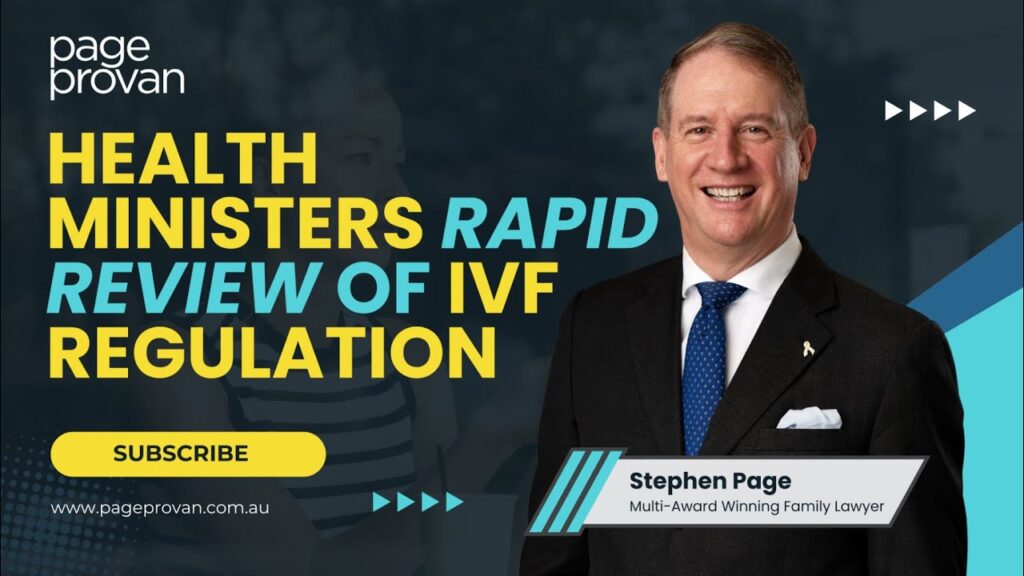Vanderhum and Doriemus- again
The wonderfully named Vanderhum and Doriemus is back with us. I wrote about it last year, in the context of amusing case names. In case we forget who they were, here is when Doriemus won the 1995 Melbourne Cup.
This time around, the mother sought to knock out the father’s application, based on the Rice and Asplund test, which was visited most recently in Miller v Harrington. Essentially the mother was saying that because the father had not demonstrated a change in circumstances regarding the children since the matter was last at court, then the father had not met the threshold in Rice and Asplund, and he should fail.
The mother was unsuccessful.
The decision in Vanderhum and Doriemus was by Federal Magistrate Altobelli, who as usual provides a very useful summary of the law, this time about Rice and Asplund:
The rule in Rice & Asplund (1979) FLC 90-725 has
been described as a rule or principle to the effect that “where there has
already been a final order in respect of parenting issues, before the court
embarks on a rehearing of those issues, the applicant must establish a
significant change of circumstance’: SPS & PLS [2008] FamCAFC 16. In SPS & PLS the Full Court
constituted by Warnick J made a number of other observations
about the rule. The term ‘threshold’ was interpreted to mean “the first question
to be determined” (paragraph 46). In the present matter it was agreed between
the parties that the Rice & Asplund issue was to be treated as a threshold
issue and thus could potentially dispose of the application at a very early
stage. Warnick J
further reflected on the rule at paragraph 48 where he states:
48. In my
view, reflection on the rule shows that:
(i) What the application of the
rule can achieve if dealt with as a preliminary matter is different from what it
can achieve if dealt with at the end of a full hearing.
(ii) In its original
formulation, the rule is directed to application as a preliminary matter. Yet,
contemporaneously with that formulation the court in Rice and Asplund determined that
the rule could equally be applied at the end of a full custody hearing. The
consequences of that determination have received little attention.
(iii) At
whatever stage of a hearing the rule is applied, its application should remain
merely a manifestation of the “best interests principle”.
(iv) Discussion in
terms that the rule may be applied as a “preliminary matter” or the primary
application be first heard “on the merits” may be unhelpful, particularly
because of the implication that, if the rule is applied as a preliminary matter,
the parenting application is not then dealt with “on the merits”.
(v) The
application of the rule is closely connected with the nature of, and degree of,
change sought to the earlier order.
(vi) “Shorthand” statements of the rule
may contribute to its misapplication.
(vii) Any application of the rule must
now measure the evidence against the principles set out in Part VII
of the Act, in particular the objects of the Part, the presumption of equal
shared parental responsibility and the steps required by the Act consequent upon
an order made or to be made in that regard.
It is important to note that the
application of the rule is merely a manifestation of the best interests
principle as it is formulated in Part
VII of the Family Law
Act. In the present case, therefore, regard must be had to Part
VII of the Act as it is currently enacted, and not as it was at the time of
the original decision.
The rationale of the rule in Rice & Asplund is to discourage
litigation in parenting matters, particularly when change is inevitable in
families both before and after separation. Families are by their inherent nature
dynamic, and so litigation about parenting issues must be discouraged unless the
change is a significant or substantial one. In SPS & PLS Warnick J thought that other reasons for the
rule included the public interest in the finality of all litigation (paragraph
56) and avoiding cases where one judge substitutes his or her own opinion of
what is in the best interests for that of another judge, though both opinions
are based on the same or similar facts (paragraph 58). In the Marriage of McEnearney (1980) FLC 90-866 Nygh J suggested at
p.75400 that another reason for the rule was to protect children from “the
enormous psychological harm” of the litigation.
The application of the rule
is closely connected with the nature and degree of the change sought. In the
present case the father seeks, for all practical purposes, a reversal of the
existing orders rather than some slight modification of the same. If the
father’s application is allowed to continue, this means the scope of the enquiry
will be broad and thus the changes he asserts need to be more far-reaching: SPS & PLS at paragraphs 82-83. Warnick J expressed
this at paragraph 84 in these terms:
84… The essential question however is
as to the sufficiency of new events to provoke a new enquiry. The answer to this
question involves putting events in the context of the broader circumstances
pertaining to arrangements for a child and measuring the significance of the
events against the significance of the steps that might follow in light of
them.
In Miller & Harrington [2008] FamCAFC 150 at
paragraphs 69-73 the Full Court distinguished between the terminology used in
financial cases, and in parenting cases, and suggested that a Rice & Asplund application ought
not to be described as a “striking out” or summary dismissal application because
the best interests principle in Part
VII of the Act still applies. Nonetheless in my opinion these remain
convenient informal descriptions provided there is no misunderstanding about the
substantive process to be followed.
The procedure to be adopted in these
cases was discussed by FM Wilson in Cortes & Cabrera [2007] FMCAfam 293 at
paragraphs 18-19:
18. What the cases do not make clear is the process that
the court should follow if it decides the threshold question in advance on a
preliminary basis. That is, should the application be dealt with as on a
demurrer or strike out application, and the court only look at the material of
the applicant and decide, on that material alone, whether, assuming it is
accepted, there is sufficient evidence to warrant the earlier orders being
revisited. Or should the court treat the application similarly to a summary
judgment application, and look at the material of both sides, and decide whether
there is a serious issue raised which justifies the earlier orders being
revisited. Or should the court effectively conduct a trial on the preliminary
issue, with evidence and cross examination on the alleged change in
circumstances.
19. There is some guidance as to the approach to be adopted.
In R & B H, supra, the use of language that the court should be left in no
doubt that it is necessary to revisit the parenting orders supports a critical
analysis of the applicant’s material. Although the passage from King & Finneran seems to suggest
that court looks at all material then available to the court, which encompasses
the material from both sides, it seems to me that the court should logically
follow a three step process, sequentially dealing with the three questions
articulated in paragraph 18 above. Each case will vary of course as to the stage
at which the decision can be made that there is/is not sufficient evidence to
warrant a re-opening of the parenting issues. As the learned authors of
Australian Family Law & Practice, Brown & Fowler, observe at [16-360],
the Full Court of the Family Court has made it clear that the question of
whether there were circumstances which required a reconsideration of a parenting
issue might, but need not, be determined as a preliminary issue. However, the
court may consider that in light of the alleged changed circumstances, it was
more appropriate to consider all the facts of the case before deciding whether
the changes circumstances existed. An applicant’s material might disclose no
change in circumstance such that the application can be summarily dismissed
without a respondent being required to put on evidence. An applicant’s material
might raise the suggestion that there is a changed circumstance which requires
investigation but after reading the respondent’s material the court might be
satisfied that there is nothing in the point raised. The court may, as a matter
of discretion determine the threshold issue without testing the evidence.
Alternatively there maybe contested issues of fact as to whether there are
changed circumstances in which case a court may need to hear from witnesses and
allow cross-examination.
The Full Court in Miller & Harrington at
paragraph 91 described the above discussion by FM Wilson as “a useful one”.
Indeed it is, particularly in the present case where, as will be seen below, the
mother does very little indeed to adduce evidence to rebut the father’s evidence
going to changed circumstances.
The Full Court in Gotch & Gotch [2009] FamCAFC 3 has
emphasised the importance of taking the case of the applicant for variation at
its highest, or as established at face value.












